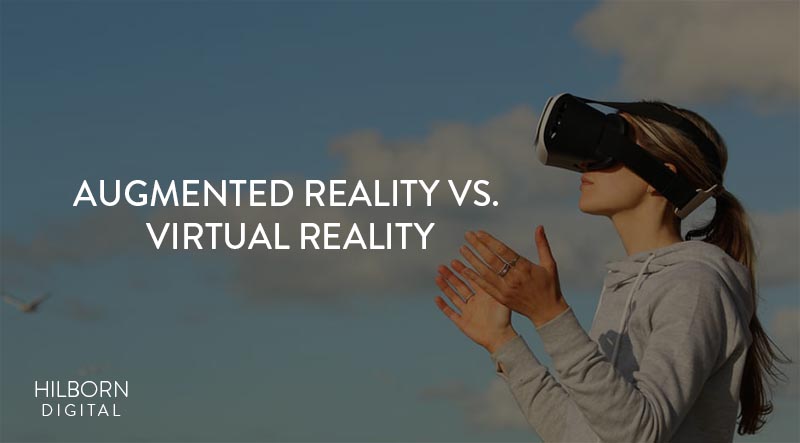Virtual Reality (VR) and Augmented Reality (AR) are closely related and because of their relative newness, they often get lumped together or confused for one another. Both can serve to enhance a user’s reality and immerse them in a product, brand or situation. While they are similar, VR and AR have some major differences that greatly impact their use and impact in marketing.
Virtual Reality
Virtual Reality creates a simulation of real life, fully immersing people in a situation to make them feel like they are actually interacting with the digital environment they are seeing. Any situation can come to life through VR and users can now experience anything in the world with this technology. You no longer have to travel to Nepal to climb Mount Everest.
A limitation of virtual reality is the requirement of headsets or goggles. They can be pricey but as the technology advances more styles at more price points are being released. With the release of Google cardboard, it’s now even easier for brands and individuals to utilize virtual reality marketing.
Augmented Reality
Augmented Reality involves the layering of digital simulations and real life. Unlike VR, AR isn’t about creating environments, it’s about altering current ones. It blends the real world and digital creations. Instead of measuring and bringing a touch home before you can see how it looks and fits, with augmented reality you can do that all before even touching or purchasing it. AR can even be as simple as scanning an ad with your phone and having a coupon or extra information pop up on the screen.
Most tablets and smartphones are already equipped to handle AR, which makes the widespread use of this technology that much easier. Pokémon GO is a great example of how easily users adopt and respond to augmented reality.
Marketing Applications for Each
Both VR and AR have marketing benefits when done right. Virtual reality is great for complete immersion into content. It’s really the only technology out there right now that can guarantee this type of unlimited focus, which is both its blessing and curse. VR can’t be used in everyday life due to this required level of interaction but for certain marketing situations, it is extremely beneficial. It’s great for allowing customers to test out a product (such as a car or activity) or teleport them to another location (for hotels or traveling). Events have also found VR technology beneficial. From fashion shows to showing a bride what a venue will be like on her wedding day, virtual reality allows businesses to give their customers the feeling like they’re really there.
Augmented Reality, on the other hand, allows for a greater variety of marketing strategies due to its easy use from any device. Its blend of reality and digital alteration makes it more open than VR, which give a good balance of keeping the customer grounded as well as providing possibility. AR is great for helping customers visualize products in use. Whether it’s trying a product (like furniture or makeup) or utilizing the real life landscape for a game (like Pokémon GO), augmented reality provides countless possibilities.
So if you’re a business interested in these technologies how do you know which one is right for your marketing needs?
VR marketing is great for experiences while AR is better used for marketing products. Games are the one area where either of these technologies works well. Marketing with augmented and virtual reality can be costly so make sure it’s right for your business and that it’s done well. Contact us to discuss your marketing objectives and how we can help your brand take advantage of this innovative technology.

